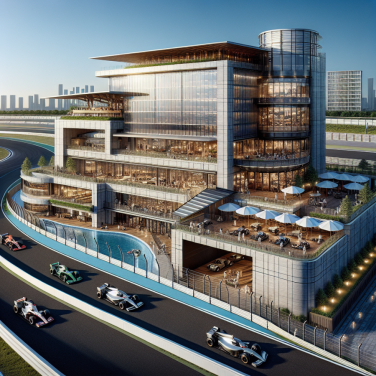The Art and Science Behind Custom Crash Motorsport Helmets
The process of designing a custom motorsport helmet involves a blend of art and science, with graphics and colour schemes meeting cutting-edge technology and comprehensive safety measures.
There are few things as vital to a motorsport racer as their helmet. It not only protects the head, brain, and upper spine during impact, but also acts as a representation of the racer's identity and style. Unsurprisingly, helmet customization has become a significant element within the motorsport world.
Custom crash helmets are often regarded as a work of art. The design itself is often inspired by the personality and preference of the individual driver, making each helmet unique. It can feature anything from distinctive, vibrant colours, images, signatures, and even stylised versions of national flags. Some racers even treat the helmet as their canvas, turning to famous artists or designers to craft a signature look. However, beneath the impressive artwork on the shell of the helmet, lies a scientific masterpiece engineered to offer unparalleled safety.
Ensuring the highest level of safety in a custom crash motorsport helmet calls for scientific precision. Starting with the material, most helmets are made from a composite of carbon fibre, Kevlar, and fibreglass. Each layer is specifically selected and arranged for its strength and lightweight properties. The shock absorption system inside the helmet generally consists of Expanded Polystyrene (EPS) foam layers. EPS foam cells are engineered to crush during an impact, absorbing energy and reducing the force that reaches the wearer's head.
Advanced computational fluid dynamics and wind tunnel technologies are used to streamline the helmet design, ensuring it is aerodynamically sound. This reduces neck strain at high speeds and improves comfort for the racer.
Further scientific advancements in the design process of custom crash motorsport helmets include the incorporation of the Head and Neck Support device (HANS). It is designed to protect the driver from the severe axial and lateral forces experienced during a crash. In addition, helmets are nowadays being fitted with Augmented Reality (AR) technologies. AR allows important data such as track information, weather conditions, and vehicle stats, to be projected onto the visor, right in the driver's line of vision.
Creating a custom crash motorsport helmet involves more than just engineering and technology. It also requires a deep understanding of human biometrics. To ensure the best fit, a 3D scan of the racer's head is often taken and used as the basis for shaping the helmet's interior padding.
Read also:
Experience the Thrill: A Comprehensive Guide to Go Karting in Clayton
Enhancing Safety on the Track: The Evolution of Motorsport Helmet Design
Motorsport helmet design has undergone various significant transformations over the years, all in the name of enhanced safety and performance. These changes have been driven by many factors, including technological advancements, new materials, increased understanding of injury mechanisms, and refinement of the testing and certification systems.
Material evolution in helmet design has played a crucial role in track safety. Early helmets were made from materials such as leather and cork, which provided limited protection. However, these materials were phased out in the 1960s when engineers began to incorporate fiberglass into helmet design. This initiated a wave of innovation that led to the use of high-strength materials such as Kevlar and carbon fiber in the 1980s. Today, helmets are commonly built from composite materials that provide higher levels of impact absorption and penetration resistance.
Improvements in the understanding of concussion and brain injury have also guided the evolution of helmet design. Initially, helmets were solely meant to protect drivers from fractures and penetrative head injuries. But as the relationship between rotational forces and brain injury became clearer, engineers began designing helmets to counter these forces. They achieved this through various mechanisms, such as MIPS (Multi-directional Impact Protection System), which allows relative movement between the helmet and head in the event of an angled impact.
Besides protective component changes, the design of the helmets themselves has evolved to enhance safety. For instance, early helmets covered only the top of the head, leaving the face exposed to potential injuries. This shortcoming led to the introduction of full-face helmets in the 1960s, a standard today in most motorsports.
A revolutionary technology integrated into modern helmets is the HANS (Head and Neck Support) device, introduced in the early 2000s. This technology, which fastens the helmet to a collar-like device worn around the neck and shoulders, mitigates extreme head movements during impacts, reducing the risk of spinal injuries.
Helmet testing and certification processes have also contributed to the safety of motorsport. For a helmet to be certified as motorsport-ready, it must meet stringent requirements set by several governing bodies, such as Fédération Internationale de l'Automobile (FIA) and Snell Memorial Foundation. These bodies perform rigorous tests, including impact absorption, flame resistance, and field of vision tests.
Additionally, the advent of data-driven design has elevated helmet safety.




